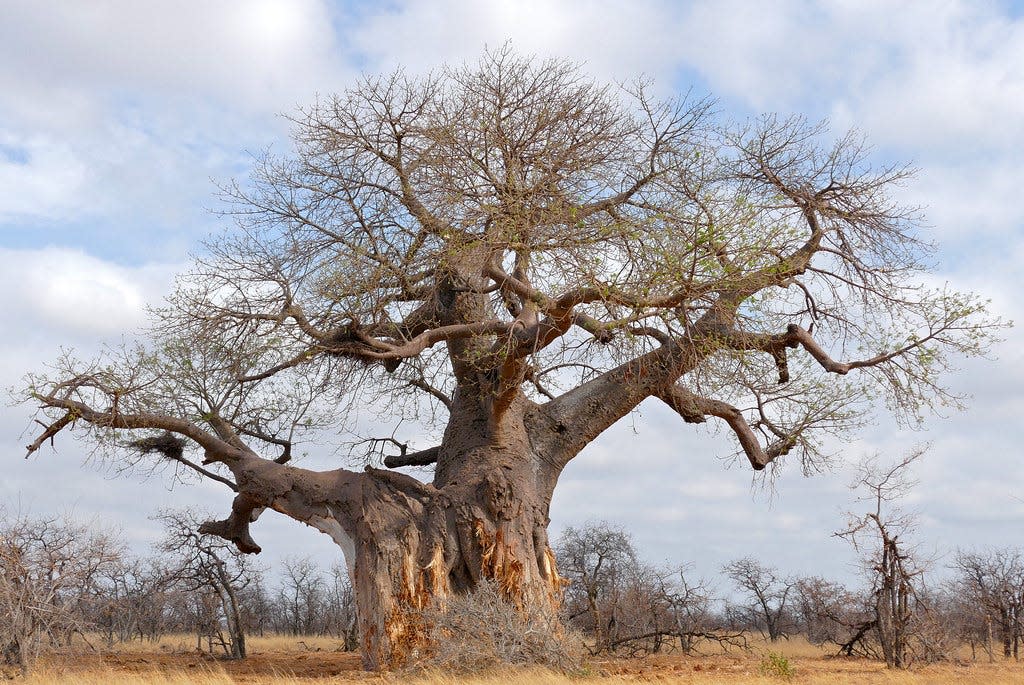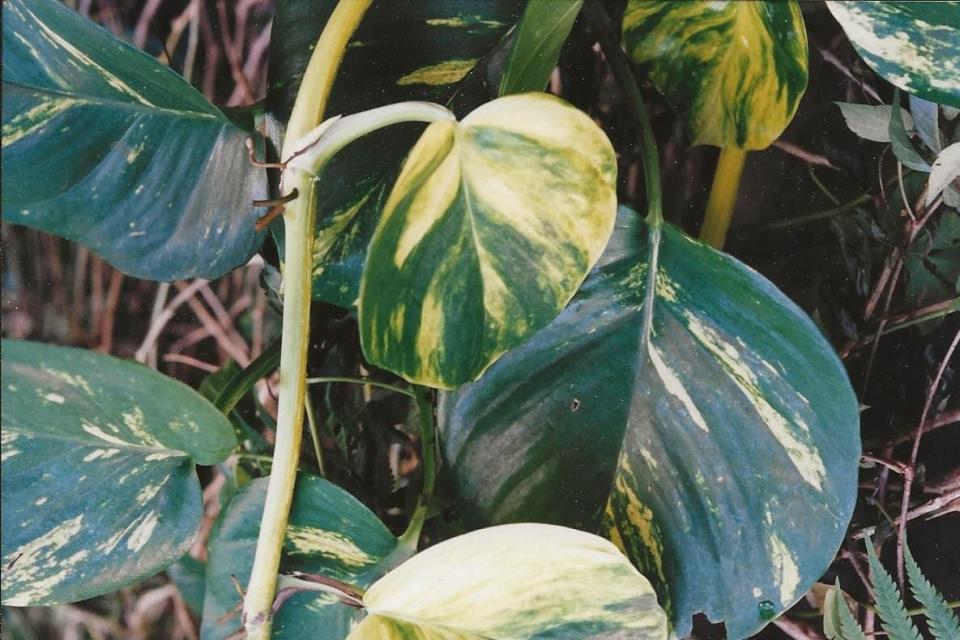Think your trees have long life spans? This one can last thousands of years

If you’re a fan of annuals and short-lived perennials, you probably won’t be eager to install a baobab tree.
Individuals of these fascinating trees – still hale and hearty – were already growing when Jesus walked the earth. One specimen, carbon-dated shortly before its demise, proved to be at least 2,400 years old.
The largest of six species (Adansonia digitata), and probably the longest lived, is native to Sub Saharan Africa, Yemen and Oman. Despite its extremely arid natural habitat, this tree thrives in South and Central Florida if set on deep, sandy sites in full sun. And it has, without a doubt, the largest potential lifespan of any plant we can cultivate here.
Revered as a sacred tree in its native lands, this baobab – also known as monkey bread tree, upside-down tree and cream of tartar – provides food, water and medicinal herbs. The upside-down moniker is because of its lengthy dormancy, which can last up to eight months, when only its rootlike trunks and branches are visible.
Serissa: This Japanese native is always green, almost always blooming and needs little maintenance
The baobab can survive protracted dry spells because the trunk and major branches contain specialized moisture-retentive cells generally found only in cactuses and succulents. During the dry season, indigenous peoples can tap water stored there.
Even stranger, baobabs in advanced age often feature hollow bases surrounded by gigantic sub trunks. For centuries these cavities have provided local folks with storage and temporary dwellings – even jails.
If you’re wondering about flowers and fruit, baobabs boast large, creamy-white blossoms that are sweetly scented at first, but then smell like rotting flesh. The fruit, which dangle on long ropey stems, are up to 10 inches long and encased in a woody outer layer. Seeds – like many in nature - germinate much more readily if they travel through an animal’s digestive tract.
The cream of tartar and monkey bread names refer to the flavor and texture of the fruit’s flesh and seeds. But humans resort to them only during periods of near starvation. Baobabs grow at a moderate rate and, when just 70 years old, typically have trunks between six and seven feet in diameter.
Monkey puzzles and costus gingers: A pair of puzzling plants for your landscape
If planting a tree for posterity excites you, realize that baobabs eventually grow up to 100 feet tall, with canopies nearly as wide. A large garden is required to comfortably accommodate even a young baobab. Both plants and seeds are available online.
Plant to ponder: Pothos

Pothos (Epiprenum aureum), a vine from the Solomon Islands, is commonly seen as a colorful houseplant with relatively small leaves. If it’s installed in the garden, however, it can ascend towering trees and develop enormous leaves. Most landscape specimens of this aggressive species were originally houseplants.
This article originally appeared on The Ledger: If you're looking for a tree for the ages, plant a baobab

